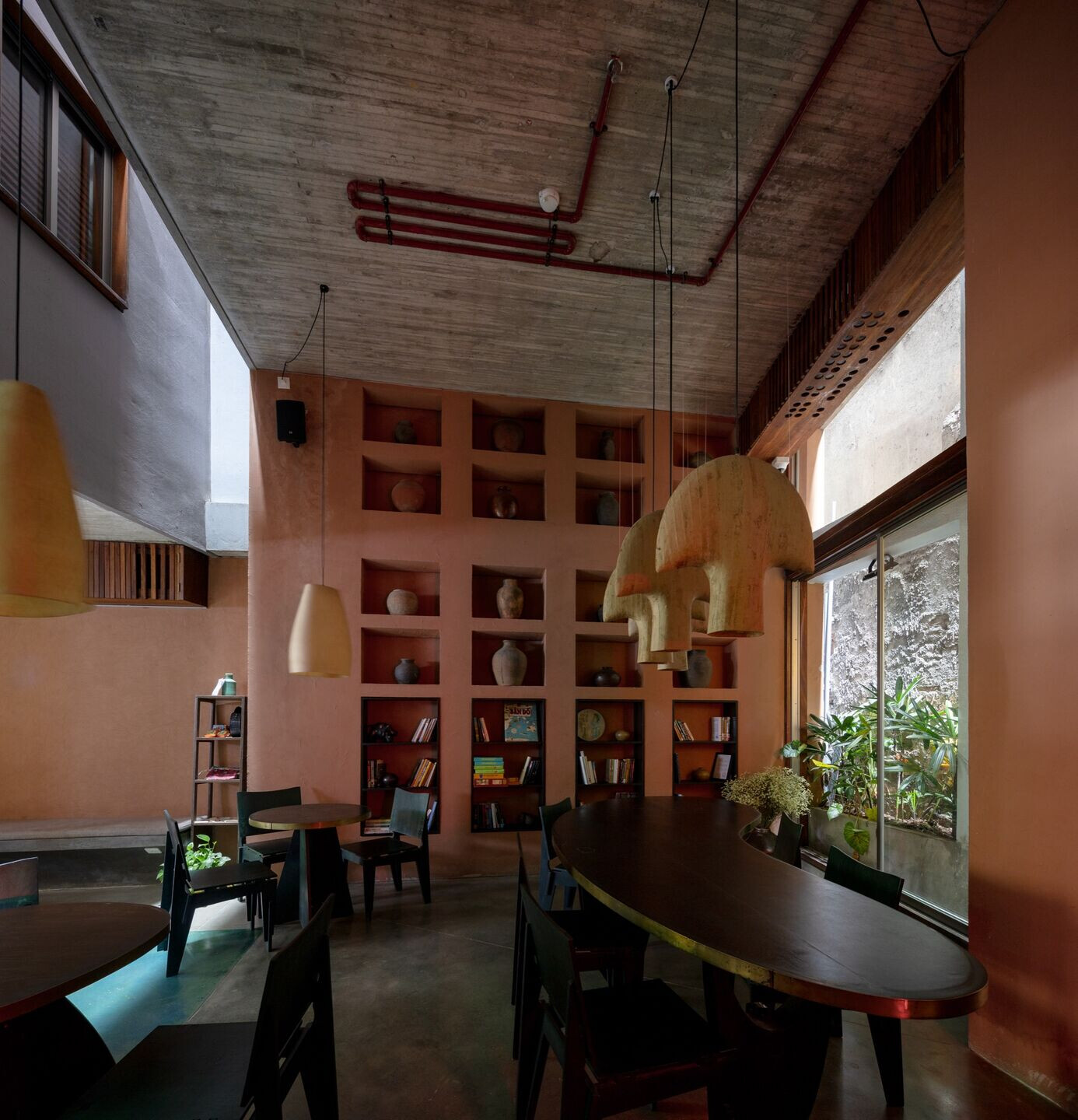Although it’s been in operation for over a year, Concon House for a mini-house still gives the impression of being just an architecture student’s dream, rising from a tiny plot in the center of old Hanoi. Its seven floors appear to float in the sky, separated from each other by stilt-like columns.

Essentially, it is a collection of independent three-room hotel units ranging in size between 10 and 20 square meters, surrounding a central core containing elevators, plumbing, and electric conduits.

Sitting on a 95 square meter plot at the end of a small lane in the congested heart of the Vietnamese capital’s Old Quarter, the structure abuts a small existing building on one side.

When the site’s developer appointed her brother to serve as art director for the project, he came to see me and asked if I would like to serve as the architect. I accepted immediately, even before hearing any details about what he had in mind. Having worked with Nguyen before, I trusted him, and felt it would be an interesting and challenging project.

He said he liked “the feeling of nooks and crannies created when a piece of the old town is transformed by its social history. I like the feeling of the cramped living quarters’ extension, where people still find small spaces of their own where social interaction is still possible.”

In my view, hotel designing is the opportunity to create a space for dozens of people who don’t know each other but suddenly share the same place for a few days, coming in and out as they go about their business.

Beyond wanting a clean comfortable place, I feel the need to be able to sit in a quiet corner of a lobby, observing life in new surroundings, a mix of tranquility with hustle and bustle. Solitary enjoyment combined with the opportunity to chat with a receptionist or a bartender.

Staying in Hanoi’s Old Quarter gives you a special feeling. From bustling streets you enter your dwelling or hotel and it feel as if entering a new hamlet, rather than just a building.




















































